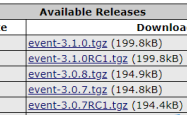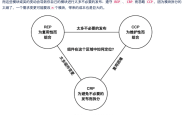php实现的数组转xml案例分析
本文实例讲述了php实现的数组转xml。分享给大家供大家参考,具体如下:
0x00 需求
最近要做百度、360、神马搜索的网站sitemap,三家的格式都是xml,然而具体的细节还有有差别的。
一开始用的是dom,没有使用sax,写了几段便觉得太傻了,想到有没有数组转xml的库呢?
0x01 array2xml
搜索了一下,还真有地址为git,于是开始撸起袖子开始干。
示例如下:
THE CODE:
?| 1 2 | $xml = new ArrayToXML(); print $xml ->buildXML( $input ); |
INPUT:
?| 1 2 3 4 5 6 7 8 9 10 11 12 13 14 15 16 17 18 19 20 21 22 23 24 25 26 27 28 29 30 31 32 33 34 35 36 37 38 39 40 41 42 43 44 45 46 47 48 49 50 51 52 53 54 55 56 57 58 59 60 61 62 63 | $input = array ( 'product' => array ( '@id' => 7, 'name' => 'some string' , 'seo' => 'some-string' , 'ean' => '' , 'producer' => array ( 'name' => null, 'photo' => '1.png' ), 'stock' => 123, 'trackstock' => 0, 'new' => 0, 'pricewithoutvat' => 1111, 'price' => 1366.53, 'discountpricenetto' => null, 'discountprice' => null, 'vatvalue' => 23, 'currencysymbol' => 'PLN' , '#description' => '' , '#longdescription' => '' , '#shortdescription' => '' , 'category' => array ( 'photo' => '1.png' , 'name' => 'test3' , ), 'staticattributes' => array ( 'attributegroup' => array ( 1 => array ( '@name' => 'attributes group' , 'attribute' => array ( 0 => array ( 'name' => 'second' , 'description' => 'desc2' , 'file' => '' , ), 1 => array ( 'name' => 'third' , 'description' => 'desc3' , 'file' => '' , ), ) ) ) ), 'attributes' => array (), 'photos' => array ( 'photo' => array ( 0 => array ( '@mainphoto' => '1' , '%' => '1.png' , ), 1 => array ( '@mainphoto' => '0' , '%' => '2.png' , ), 2 => array ( '@mainphoto' => '0' , '%' => '3.png' , ) ) ) )); |
OUTPUT (XML data):
?| 1 2 3 4 5 6 7 8 9 10 11 12 13 14 15 16 17 18 19 20 21 22 23 24 25 26 27 28 29 30 31 32 33 34 35 36 37 38 39 40 41 42 43 44 45 46 47 | <? xml version = "1.0" encoding = "UTF-8" ?> < data > < product id = "8" > < description ><[CDATA[]]></ description > < longdescription ><[CDATA[]]></ longdescription > < shortdescription ><[CDATA[]]></ shortdescription > < name >some string</ name > < seo >some-string</ seo > < ean ></ ean > < producer > < name ></ name > < photo >1.png</ photo > </ producer > < stock >123</ stock > < trackstock >0</ trackstock > < new >0</ new > < pricewithoutvat >1111</ pricewithoutvat > < price >1366.53</ price > < discountpricenetto ></ discountpricenetto > < discountprice ></ discountprice > < vatvalue >23</ vatvalue > < currencysymbol >PLN</ currencysymbol > < category > < photo >1.png</ photo > < name >test3</ name > </ category > < staticattributes > < attributegroup name = "attributes group" > < attribute > < name >second</ name > < description >< p >desc2</ p ></ description > < file ></ file > </ attribute > < attribute > < name >third</ name > < description >< p >desc3</ p ></ description > < file ></ file > </ attribute > </ attributegroup > </ staticattributes > < photos > < photo mainphoto = "1" >1.png</ photo > < photo mainphoto = "0" >2.png</ photo > < photo mainphoto = "0" >3.png</ photo > </ photos > </ product > </ data > |
可以看到,# 表示CDATA,@表示属性,%代表有属性时这个元素本身的值,非常简洁。
另外数组要把重复元素提到外面作为数组的key,重复元素的各种属性是数组的值,并不需要像上面那样指定 0、1、2索引,直接用就可以了。
0x02 改进
可是发现有一个bug,根节点不能以CDATA开始。
另外还缺少一个功能,CDATA和属性不能同时存在。
于是阅读源码,改进了这两项,提交给了作者,并被合并了。
我额外增加了一个符号 “!” ,当CDATA 和属性同时存在时,写法为:
?| 1 2 3 4 5 6 | $input = [ "key" =>[ "@id" => 1, "!" => 2 ] ] |
<key id="1"><![CDATA[2]]></key>
希望本文所述对大家PHP程序设计有所帮助。
原文链接:https://www.cnblogs.com/xdao/p/php_array2xml.html
1.本站遵循行业规范,任何转载的稿件都会明确标注作者和来源;2.本站的原创文章,请转载时务必注明文章作者和来源,不尊重原创的行为我们将追究责任;3.作者投稿可能会经我们编辑修改或补充。











